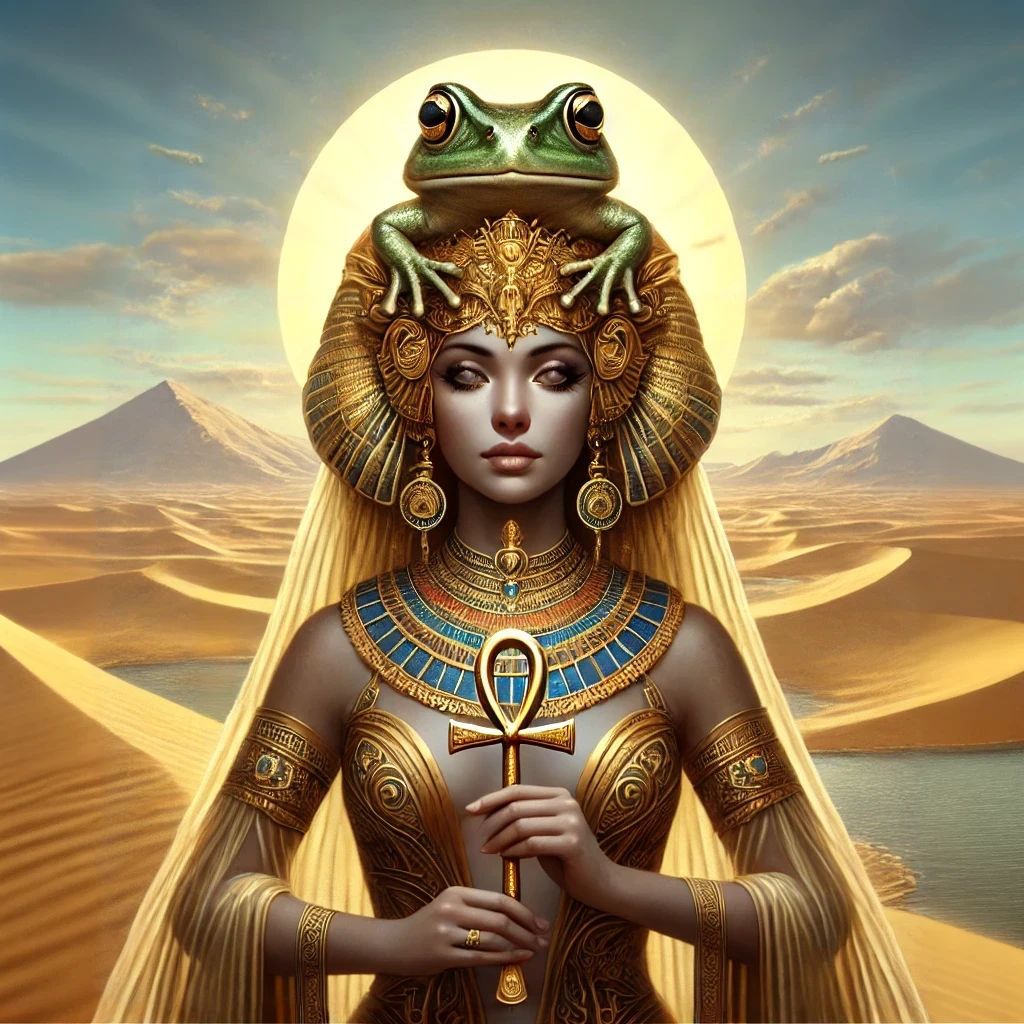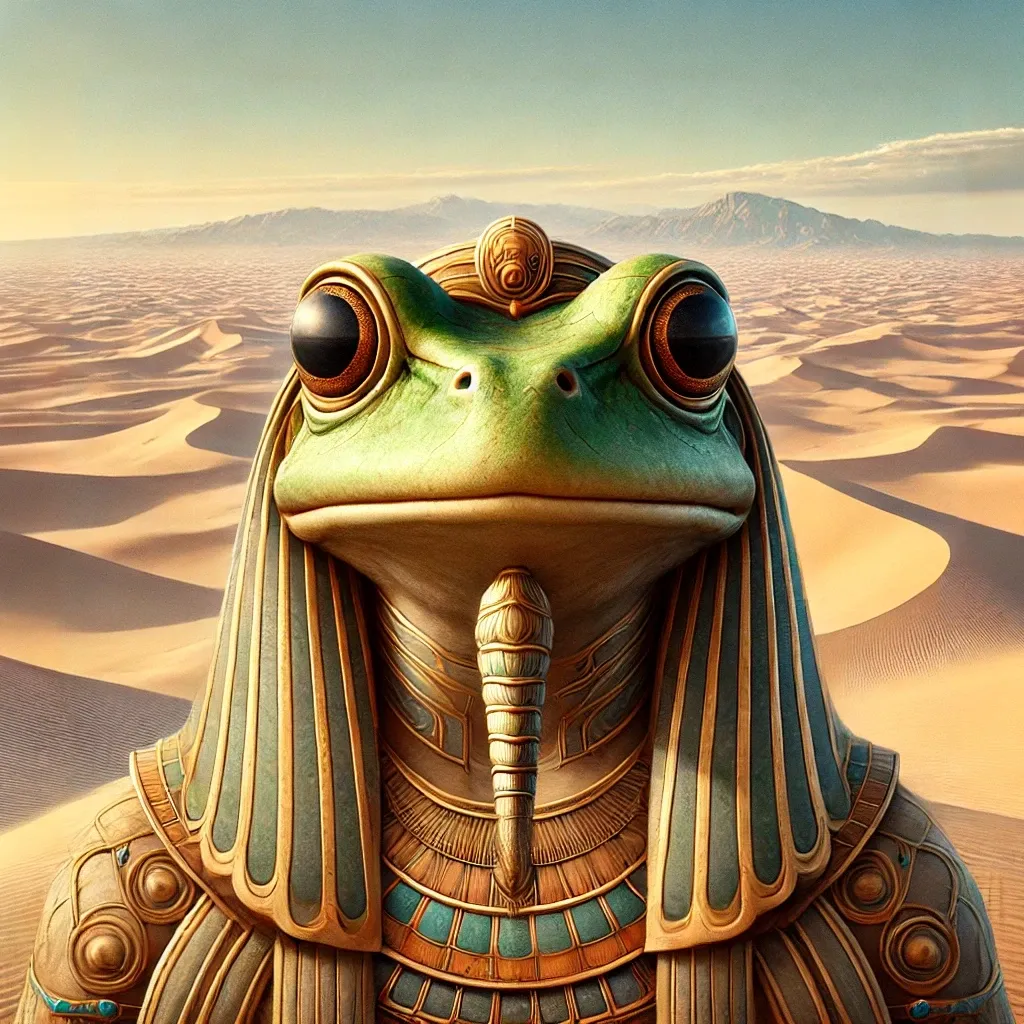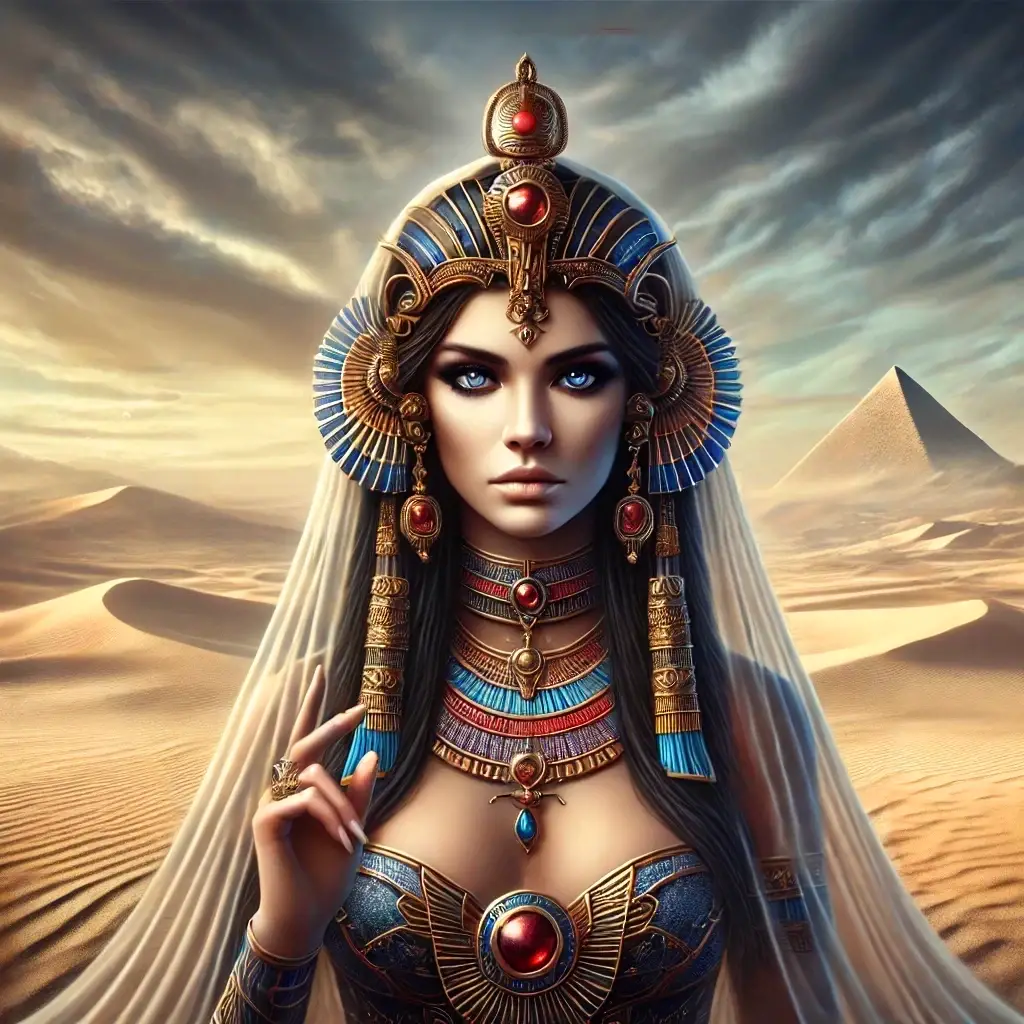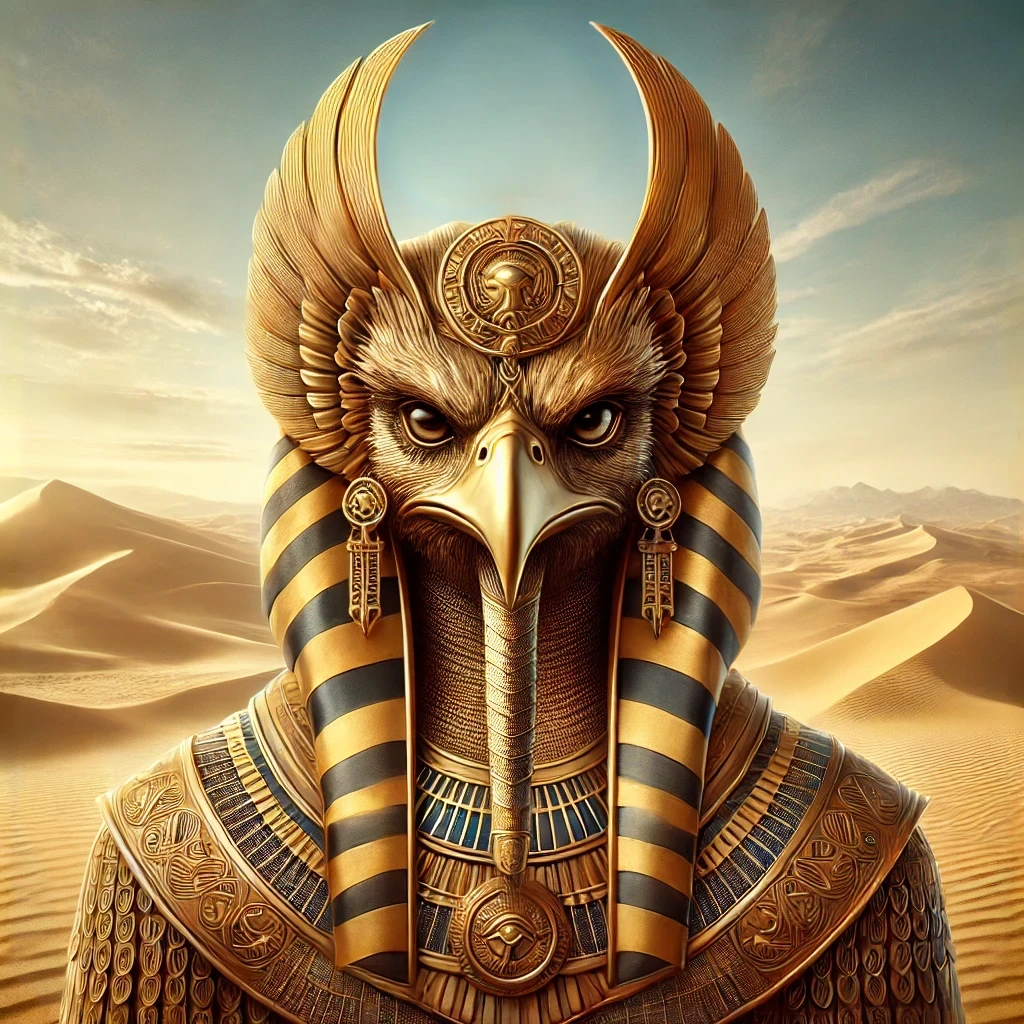Known as the goddess of fertility, childbirth, and regeneration, Heqet is an ancient Egyptian deity often depicted as a frog or a woman with the head of a frog. Her name, sometimes transliterated as Heket, is derived from the Egyptian word for “frog.” This connection to amphibians, creatures associated with fertility and the annual flooding of the Nile, solidifies her role as a life-giver. She is also known by the epithet “Mistress of Birth” and was venerated as a protector of pregnant women and newborns.
Origins
Historical Roots
The origins of this goddess trace back to the ancient Nile Valley, where frogs symbolized the fertility of the river’s annual inundation. Her role emerged alongside the rise of agricultural societies that relied on the Nile’s cycles to sustain crops and life. By the Old Kingdom, she had become a central figure in fertility rites and midwifery practices.
Religious Development
During the Middle Kingdom, the deity’s prominence grew in association with childbirth rituals. As an aide to Khnum, the creator god who shaped humans on his potter’s wheel, she was believed to imbue these forms with life. This connection elevated her role as a divine midwife and life-giver.
Appearance
Iconography
Heqet is predominantly depicted as a woman with the head of a frog, a creature considered sacred in ancient Egypt due to its connection with water and fertility. Occasionally, she appears entirely in frog form, underscoring her symbolic link to rebirth and transformation.
Artistic Representations
Statues and carvings often show her holding an ankh, the symbol of life, or a scepter denoting power. These artistic renditions emphasize her role in bringing vitality and protecting the vulnerable, particularly during childbirth.
Abilities
Powers of Fertility and Creation
As a fertility deity, Heqet was thought to oversee conception and childbirth, ensuring the safe delivery of new life. Her powers extended to the protection of mothers and infants, guarding them from harm during perilous moments.
Role in Resurrection
In later mythological interpretations, she played a part in the resurrection of Osiris. Her association with life’s renewal extended her influence beyond the mortal realm, linking her to the afterlife and spiritual regeneration.
Myths
Aid to Isis
One of the most notable myths involves Heqet assisting the goddess Isis during the birth of Horus. As a divine midwife, she ensured the safe arrival of the child destined to reclaim order in the cosmos.
Ties to the Nile’s Inundation
Another tale describes her connection to the annual flooding of the Nile. Her association with frogs—which proliferated after the inundation—made her a symbol of abundance and renewal. Rituals invoking her were common among farmers seeking bountiful harvests.
Symbolism
Frogs as Symbols of Life
Frogs, which thrive in the Nile’s fertile environment, represented Heqet’s essence. They were seen as harbingers of prosperity and regeneration, embodying her life-giving powers.
The Ankh and Scepter
The ankh she carries is an enduring emblem of life, while her scepter signifies her divine authority over fertility and creation. Together, these symbols reinforce her protective and nurturing aspects.
Associated Objects, Animals, and Plants
Sacred Animals
The frog, Heqet’s primary animal, symbolizes her connection to the watery realms and the life they sustain. The amphibian’s transformation from tadpole to adult mirrors her role in fostering life and growth.
Ritual Objects
Amulets bearing her likeness were worn by pregnant women to ensure safe childbirth. These artifacts often featured inscriptions invoking her protection.
Associated Plants
Lotus flowers, which bloom in the Nile’s waters, were sometimes linked to her as symbols of rebirth and purity, complementing her life-affirming attributes.
Relationships
Connection to Khnum
Heqet worked closely with Khnum, the creator god, to animate the forms he molded on his potter’s wheel. This partnership underscored her role as a vital force in the divine process of creation.
Association with Isis
Her aid to Isis during Horus’ birth highlights her nurturing and protective nature. This relationship also ties her to broader themes of cosmic balance and renewal.
Links to Osiris
Her involvement in Osiris’ resurrection further cemented her reputation as a deity of life and renewal, transcending the boundaries between the living and the dead.
Trivia
- Heqet’s image adorned the walls of birthing chambers, emphasizing her role in childbirth.
- The hieroglyph for her name includes the frog symbol, reflecting her sacred association.
- She was sometimes invoked during the mummification process, ensuring the deceased’s safe journey to the afterlife.
- Ancient Egyptian midwives often identified themselves as servants of the goddess, invoking her protection during their work.
- During the Greco-Roman period, her cult persisted, adapting to the era’s evolving religious landscape.



